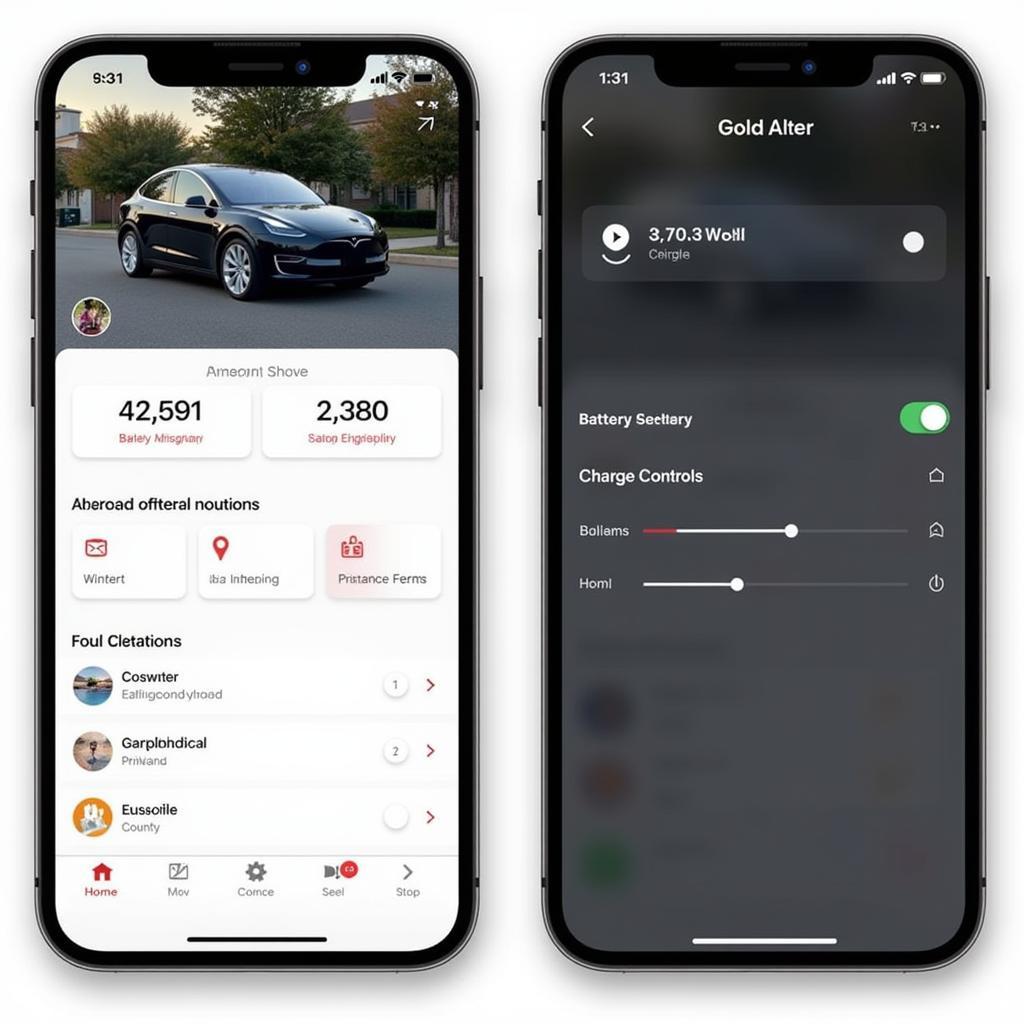Tesla vehicles are known for their cutting-edge technology and performance, but like any other car, they can experience issues. Understanding common Tesla car problems can help you troubleshoot them efficiently, maintain your vehicle properly, and ultimately ensure a smoother driving experience.
Common Tesla Car Problems
While Tesla cars are generally reliable, certain problems have been reported by owners and mechanics alike. These include:
Battery Issues
- Battery Degradation: Tesla batteries are known to experience some degradation over time, leading to a reduced driving range.
- Battery Cooling System Problems: The battery cooling system can malfunction, potentially affecting battery performance and lifespan.
- Battery Charging Issues: Tesla vehicles may encounter difficulties charging, ranging from slow charging speeds to complete charging failures.
Software and Technology Glitches
- Software Updates: While intended to improve functionality, software updates can sometimes cause unexpected problems, such as malfunctions in the infotainment system, autopilot, or other features.
- Connectivity Issues: Tesla vehicles rely heavily on connectivity for various functions. Connectivity issues can impact features like navigation, streaming services, and over-the-air updates.
- Autopilot and Autopilot-Related Systems: While autopilot technology is innovative, it’s not without its challenges. Some owners have reported Autopilot malfunctioning, causing accidents or near misses.
Mechanical Problems
- Suspension and Steering Issues: Tesla vehicles can experience issues with their suspension and steering systems, leading to problems like squeaking, clunking, or loss of control.
- Brakes: Brake problems, including brake fade, noise, or faulty sensors, can arise in Tesla vehicles.
- Electrical System Malfunctions: Tesla’s electrical system, which powers everything from the motors to the infotainment system, can be prone to failures, requiring complex troubleshooting.
How to Solve Common Tesla Car Problems
Addressing Tesla car problems effectively requires a combination of understanding, resources, and expertise. Here are some tips for troubleshooting and resolving common issues:
1. Check Your Owner’s Manual
- Understanding the Basics: The Tesla owner’s manual is your first line of defense. It provides detailed information on operating, troubleshooting, and maintaining your vehicle.
- Addressing Common Issues: Many common problems can be resolved with the help of the owner’s manual. For example, it might guide you through resetting your infotainment system or troubleshooting a charging issue.
2. Use the Tesla App
- Monitor Your Car: The Tesla app offers a range of features, including tracking your vehicle’s location, battery status, and charging progress. It can also alert you to potential issues.
- Remote Access: In some cases, you can even remotely diagnose and fix problems using the Tesla app. This can include remotely locking and unlocking your car, activating climate control, and even starting the engine.
 Tesla Mobile App Interface
Tesla Mobile App Interface
3. Contact Tesla Support
- Expertise at Your Fingertips: Tesla offers excellent customer support, providing expert assistance with troubleshooting and resolving various car problems.
- Access to Information: Tesla support can provide access to the latest troubleshooting guides, software updates, and information about known issues.
4. Consult with an Independent Mechanic
- Alternative Solutions: If you’re unable to resolve a problem through Tesla support or the owner’s manual, consider seeking assistance from a qualified independent mechanic specializing in electric vehicles.
- Cost-Effective Solutions: Independent mechanics can sometimes provide cost-effective solutions, especially for routine maintenance and repairs.
Tips for Maintaining Your Tesla
- Regular Maintenance: Just like any other car, your Tesla needs regular maintenance, including oil changes, tire rotations, and brake inspections.
- Battery Care: Follow Tesla’s recommendations for charging and storing your battery to maintain its optimal performance and lifespan.
- Software Updates: Keep your Tesla’s software up-to-date to benefit from new features, performance improvements, and bug fixes.
 Tesla Supercharger Station
Tesla Supercharger Station
Expert Insights
“Tesla owners should be aware that these vehicles are still relatively new and can experience unique problems. It’s important to be proactive and stay informed about common issues and maintenance requirements,” says [Expert Name], an automotive expert with [Expert Affiliation].
Conclusion
Tesla cars offer an exciting driving experience, but like any vehicle, they can encounter problems. By understanding common Tesla car problems and their solutions, you can enjoy your Tesla to the fullest. Remember to stay informed, proactive, and seek expert help when necessary. If you encounter any further issues, please don’t hesitate to contact AutoTipPro for assistance:
Phone: +1 (641) 206-8880
Office: 500 N St Mary’s St, San Antonio, TX 78205, United States
FAQ
- Q: Are Tesla cars more expensive to repair than traditional gasoline cars?
- A: Repairing a Tesla can be more expensive than a traditional gasoline car, especially for complex repairs involving electronics or the battery.
- Q: What are some signs of a failing battery in a Tesla?
- A: Signs of a failing battery include a reduced driving range, slower charging speeds, and a decrease in overall performance.
- Q: How can I prevent battery degradation in my Tesla?
- A: Following Tesla’s charging recommendations, avoiding extreme temperatures, and not fully draining the battery can help prevent battery degradation.
- Q: Is it safe to drive a Tesla with a malfunctioning autopilot system?
- A: It’s not recommended to drive a Tesla with a malfunctioning autopilot system. Contact Tesla support or a qualified mechanic for assistance.
- Q: What are the common causes of electrical system failures in Tesla vehicles?
- A: Common causes of electrical system failures include damaged wiring, faulty components, and software glitches.




Leave a Reply